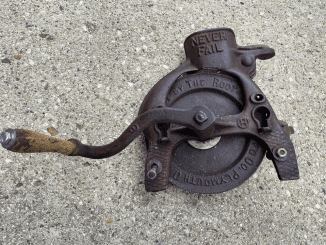Traffic puzzles are some of the most deceptively tricky brain teasers out there. They look simple—just a few cars, a basic intersection, and a multiple-choice question. But more often than not, they reveal how little attention we pay to the rules of the road. The image above is a perfect example of that. You’re given three cars—A, B, and C—approaching an intersection from different directions, and you’re asked: In what order should the cars proceed?
Seems easy? Think again. Let’s break it down step by step, expose common mistakes, and get to the correct answer—with logic, not guessing.
Can You Solve It? Look Closely Before You Decide

Take a moment to study the image carefully. You have:
- Car A (yellow): making a left turn
- Car B (white): going straight
- Car C (blue): making a right turn
Your task is to determine the proper sequence based on standard traffic rules—no traffic lights, no stop signs, just right-of-way principles.
Before you scroll for the answer, try solving it yourself. Think of it as a driving test for your brain.
Why Most People Get This Puzzle Wrong
Let’s be honest. Many people answer these puzzles based on gut instinct instead of actual traffic logic. Here are the most common mistakes:
- Assuming the vehicle turning right always goes first.
While generally true, it’s only valid when other drivers are not already crossing their path. - Focusing only on who turns and ignoring the path intersections.
Just because someone is going straight doesn’t mean they automatically go first. It depends on whether their path crosses others. - Ignoring the yield rule when turning left.
A left-turning vehicle must always yield to oncoming traffic going straight or turning right.
These tiny but crucial rules are what separate the correct answer from the misleading ones.
Video : Test Your IQ : Which Car Has To Move First ?
Step-by-Step Breakdown: Who Goes First, and Why
Let’s analyze each car and see how their paths interact:
Car A (Yellow): Turning Left
Car A wants to turn left, which automatically puts it at a disadvantage. Left turns must yield to any oncoming vehicle going straight or turning right. So A definitely doesn’t go first.
Car B (White): Going Straight
Car B is moving straight through the intersection. That usually gives it priority over turning vehicles, especially left-turners like A.
Car C (Blue): Turning Right
Car C is turning right, which typically gives it priority over a vehicle turning left (like A), but—here’s the kicker—C must also yield to cars going straight from the opposite side (like B).
So, how does that all line up?
- B has no obligation to yield to anyone. It’s going straight.
- C must yield to B.
- A must yield to both B and C.
Final Order: B, C, A
This is the correct sequence because:
- Car B goes first (straight, no conflicts).
- Car C goes second (right turn after yielding to B).
- Car A goes last (left turn after everyone else clears).
So, if you chose Option C: B, C, A, congratulations—you passed this mini driving IQ test.

Breaking Down the Options: Why the Others Are Wrong
Let’s briefly touch on the other choices and why they don’t hold up.
- Option A: B, A, C
Wrong because A can’t go before C. A is turning left and must wait for C’s right turn. - Option B: C, B, A
Wrong because C must yield to B, so it can’t go before. - Option D: A, B, C
Completely incorrect. A going first would break basic traffic laws. It would cut off both B and C.
Why This Puzzle Matters More Than You Think
This isn’t just a fun logic puzzle. It’s a reminder of how quickly we forget the rules we once studied to pass our driving tests. In real life, these mistakes can cause hesitation, confusion, or worse—accidents.
Understanding how right-of-way works can save lives, prevent traffic jams, and make you a more confident driver.
Ready for a Challenge? Share Your Answer
Did you get it right on the first try? Or did you second-guess yourself and choose the wrong option?
Drop your answer in the comments and tag a friend to challenge them too. These puzzles are more fun—and more revealing—when shared.
Try timing yourself and see who solves it the fastest. Bragging rights go to the driver who knows their rules!
Video : Test Your IQ : Which Car Will Be Reach First ? !
Conclusion: The Little Things Make the Big Difference
In puzzles like this, it’s easy to overlook minor details. But in both driving and problem-solving, the smallest details matter most. A left turn versus a right turn. A straight path versus a yield. Those differences determine the right answer—and in real life, they could mean the difference between smooth traffic flow and chaos.
So, what did we learn today?
- Left turns yield to everything.
- Right turns must still yield to straight-moving vehicles.
- The straight path usually takes priority.
The correct order for the cars to proceed is: B, C, A.
Next time you’re faced with a driving riddle—or even at a real-life intersection—remember this breakdown. Logic, patience, and observation are the keys to mastering both roads and riddles.


